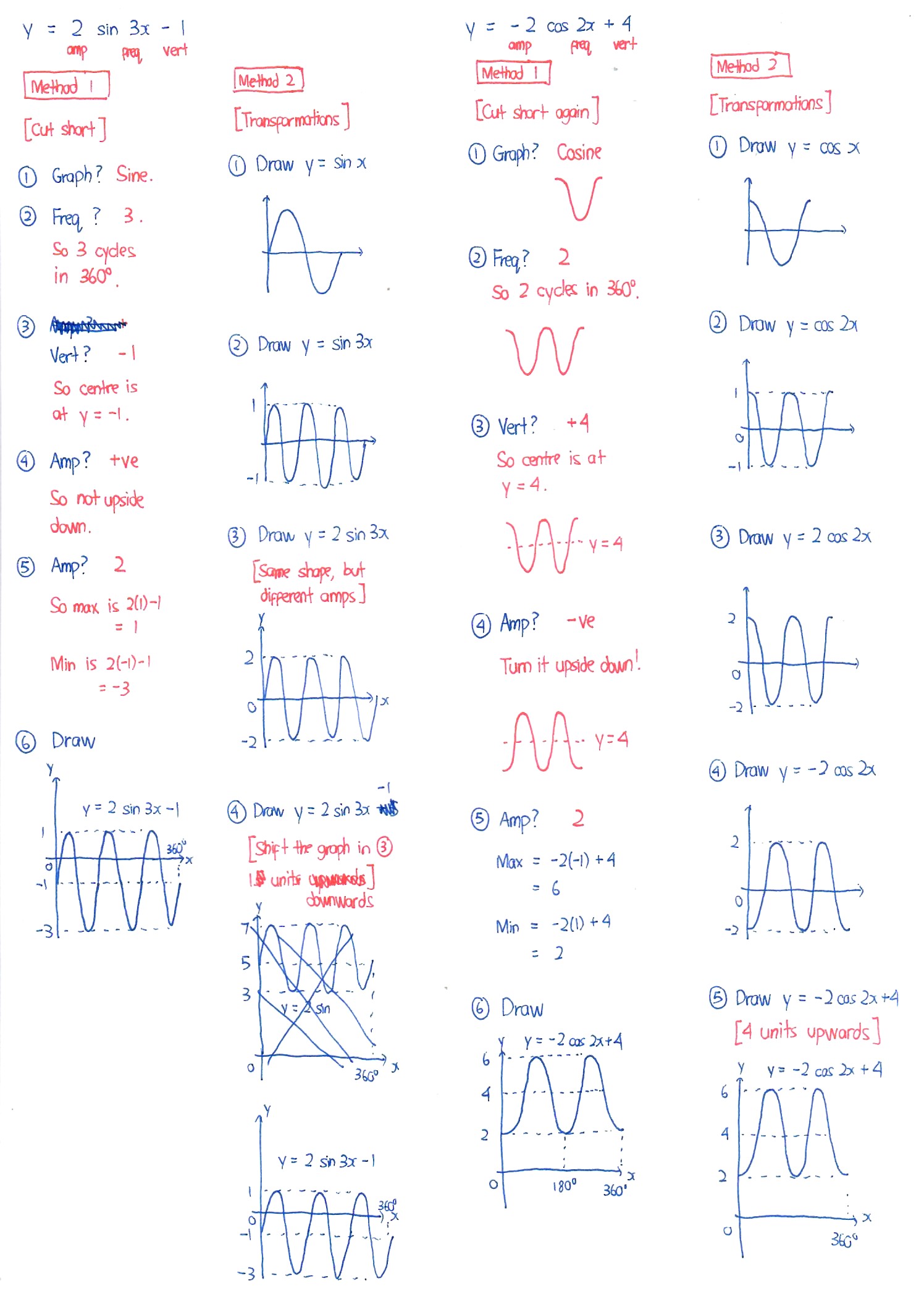Eric Nicholas K's answer to Kathy's Secondary 4 A Maths Singapore question.
done
{{ upvoteCount }} Upvotes
clear
{{ downvoteCount * -1 }} Downvotes
Two random examples.
For the first method of calling out essential numbers, we need the following.
1. Sine or Cosine?
2. How many cycles?
3. Where is the centre?
4. Is the graph upside down?
5. Max/Min?
Then we draw the graph.
For the second method of transformations, we need the following.
1. Graph of the basic y = sin x (the cosine case is similar)
2. Graph of y = sin bx (after factoring in the frequency b)
3. Graph of y = a sin bx (the signage of a determines whether the graph should be flipped or not, the value of a determines whether the graph is compressed or elongated)
4. Graph of y = a sin bx + c (the value of c determines whether the graph gets shifted up or down)
For the first method of calling out essential numbers, we need the following.
1. Sine or Cosine?
2. How many cycles?
3. Where is the centre?
4. Is the graph upside down?
5. Max/Min?
Then we draw the graph.
For the second method of transformations, we need the following.
1. Graph of the basic y = sin x (the cosine case is similar)
2. Graph of y = sin bx (after factoring in the frequency b)
3. Graph of y = a sin bx (the signage of a determines whether the graph should be flipped or not, the value of a determines whether the graph is compressed or elongated)
4. Graph of y = a sin bx + c (the value of c determines whether the graph gets shifted up or down)
Date Posted:
5 years ago
Graphs like this are very difficult to explain on paper only (vocal aids like classroom teaching will be more effective). But I have included the essence of the drawings. In my opinion my first method of calling out essential numbers is probably easier for you.


